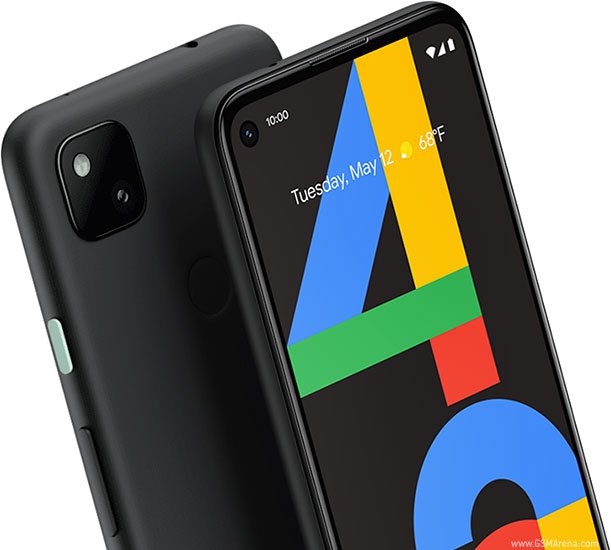After the Pixel 3a proved that a budget-friendly Pixel focused on camera and software excellence was a winning strategy, Google followed up in August 2020 with the Google Pixel 4a. This phone wasn’t about radical new features; instead, it focused on refining the “a” series formula, modernizing the design, and offering even more value for money. Notably, Google simplified the lineup this time around, offering only one size – there was no Pixel 4a XL.
Design: Modern Look, Familiar Comforts

The Pixel 4a sported a more contemporary look compared to its predecessor:
- Hole-Punch Display: It was the first Pixel to feature a hole-punch cutout for the front camera, allowing for significantly slimmer bezels all around compared to the 3a and a more immersive viewing experience on its 5.81-inch OLED display.
- Polycarbonate Build: Like the 3a, it featured a lightweight and durable polycarbonate unibody, available initially only in “Just Black” (a limited “Barely Blue” came later).
- Rear Fingerprint Sensor: The reliable “Pixel Imprint” sensor remained on the back.
- Headphone Jack Stays! Much to the delight of many users, the 3.5mm headphone jack was retained.
- Camera Bump: It adopted the square camera module design from the Pixel 4, although housing only a single lens and flash.
- Compromises: As expected for the price, there was no official IP rating for water resistance and no wireless charging. The screen used Corning Gorilla Glass 3 for protection.
Hardware: Smart Upgrades Where It Counts
While still firmly a mid-range device, the Pixel 4a received meaningful bumps in key areas:
- Processor: Moved to the slightly faster Qualcomm Snapdragon 730G chip, optimized for better gaming performance than the 3a’s Snapdragon 670.
- RAM Boost: Significantly, RAM was increased to 6GB (up from 4GB on the 3a), matching the flagship Pixel 4 and greatly improving multitasking capabilities.
- Storage Doubled: Base storage was doubled to 128GB (up from 64GB on the 3a) and used the faster UFS 2.1 standard, offering plenty of space and quicker app loading times.
- Battery: A 3140mAh battery provided solid, if not outstanding, all-day endurance for most users, supported by 18W fast charging via USB-C.
- Security: The Titan M security chip was included.
Camera: Still Punching Above Its Weight
Google stuck with its winning camera formula:
- Proven Sensor: It used the same excellent 12.2MP Sony IMX363 rear sensor found in the Pixel 3, 3a, and 4, now paired with a slightly wider f/1.7 aperture and OIS + EIS.
- Software Magic: Thanks to Google’s computational photography prowess, the 4a delivered photos that rivaled phones costing more than twice as much. Features like Portrait Mode, Super Res Zoom, and Live HDR+ were all present.
- Night Sight + Astro: It inherited the fantastic Night Sight capabilities, including the Astrophotography mode introduced on the Pixel 4, making it a surprisingly capable low-light shooter for its price.
- Front Camera: A single 8MP sensor resided in the new hole-punch cutout.
- Storage: Continued to offer free unlimited storage on Google Photos at “High Quality.”
Software: Clean, Helpful, and Updated
Launching with Android 10 and eventually updated to Android 13 (support ended August 2023), the Pixel 4a offered the pure Google experience:
- Pixel Exclusives: Features like Call Screen, the Recorder app with live transcription, and Now Playing provided unique value.
- Timely Updates: Received Android version and security updates directly from Google.
- No Active Edge: One feature dropped from the 3a was Active Edge (squeezing the sides for Assistant).
Reception and Legacy: The Mid-Range Champion?
The Pixel 4a received overwhelmingly positive reviews and was widely hailed as one of the best smartphone values of 2020, if not the best. Its $349 launch price, combined with the flagship-level camera, smooth performance (aided by 6GB RAM and 128GB storage), clean software, modern design, and the inclusion of a headphone jack, created an incredibly compelling package.
While it lacked premium features, its focused approach and excellent execution of the essentials made it a massive success. The Pixel 4a arguably perfected the “a” series formula established by the 3a, delivering an outstanding core experience for an exceptionally reasonable price.
